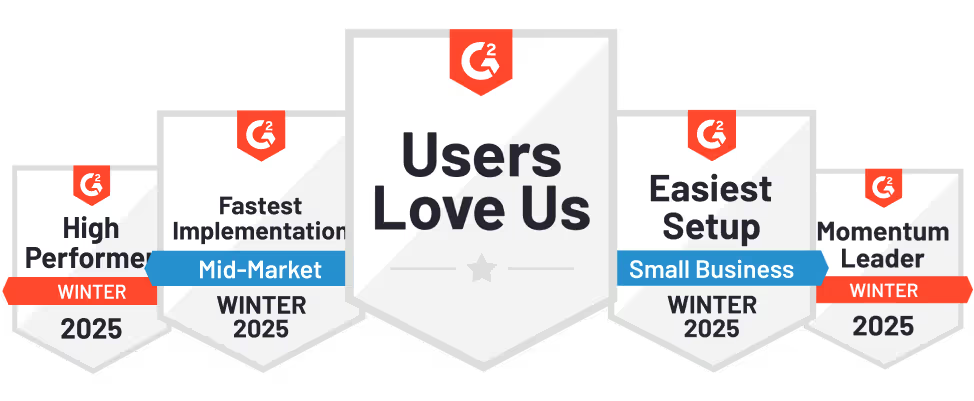The important thing about implementing website visitor identification software is not just about buying and installing the software. It's about fundamentally changing your go-to-market strategy. When done right, website visitor identification tools enable you to shift to a more targeted account-based approach with intent-based outreach and campaigns. But how do you implement them effectively? Let me walk you through it.
Choosing the right website visitor identification tool requires balancing accuracy, integrations, privacy compliance, and scalability. Learn how to do this right by reading our guide on How to Choose the Right Website Visitor Identification Tool.
TL;DR
- Focus on specific channels, regions, and high-intent pages to identify ~1,000 high-value accounts.
- Segment accounts, run LinkedIn campaigns, and pass the top 10% engaged accounts to SDRs for outreach.
- Track metrics, update intent signals, and avoid duplicate data for smooth sales and marketing alignment.
- Assess account identification, engagement, and pipeline impact before scaling campaigns and SDR efforts.
How to Start Small and Scale Big with Website Visitor Identification
When you first implement visitor identification on your website, the sheer volume of data can feel overwhelming. Imagine having 50,000 visitors and suddenly getting information about 30,000 companies – it's like drinking from a firehose. Instead, I recommend limiting your initial scope in three key areas:
- Channel Focus: Pick one marketing channel (such as LinkedIn) and one sales channel (typically one SDR).
- Geographic Focus: Limit your efforts to a specific region, such as North America, to streamline execution.
- Page Focus: Initially track only high-intent pages like pricing, demo requests, and other conversion-focused pages.
Understand how website visitor identification technology tracks and identifies anonymous traffic to improve marketing and sales efforts. Dive into the details in our guide: How Does Website Visitor Identification Technology Work?.
Why This Approach Works
By starting small, you can effectively identify approximately 1,000 high-intent accounts and monitor their website activity within your target market. This manageable scope allows your marketing and sales teams to execute strategies effectively without becoming overwhelmed by data.
The Three-Month Plan to Implement Website Visitor Identification
Month 1: Setup and Segmentation
Start by segmenting your identified accounts based on industry or employee size ranges. Why? Because your value proposition likely varies across these segments. Create customized LinkedIn campaigns with messaging that addresses each segment's specific needs and pain points.
Don't forget about your paid search landing pages. These visitors are particularly valuable because they've actively searched for relevant keywords before landing on your site. Use this search intent data to further refine your LinkedIn campaign targeting.
Month 2-3: Campaign Execution and Sales Integration
Run your LinkedIn campaigns for at least a quarter. During this time, you'll notice some accounts showing increased engagement by returning to your website multiple times. This is when you bring in the sales muscle.
Select the top 10% most engaged accounts (about 100 from your initial 1,000) and hand them over to your SDR. But here's the crucial part – don't let your SDR cut corners. They should:
- Research the full buying group within each company
- Conduct detailed account research to understand their needs.
- Craft highly personalized outreach messages tailored to each account.
Intent scoring starts with website visitor identification, helping you prioritize high-intent accounts based on real engagement. Learn how it works in our guide: Intent Scoring via Website Visitor Identification.
CRM Integration: The Foundation of Success
Your CRM integration strategy needs to handle both new and existing accounts effectively. Here's how:
For New Accounts:
- Create company records with "Website Visitor Identification" as the source
- Track key metrics like pages viewed, number of visits, and total time spent
- Pull relevant contacts from tools like Apollo for sales outreach.
For Existing Accounts:
- Update intent signals without duplicating records
- Track the first and last dates of identified intent
- Log anonymous browsing activity, focusing on product pages and case studies
- Expand the contact list to include the full buying group
Special Considerations:
- For accounts with an assigned Account Executive (AE), route intent alerts directly to them.
- For unassigned accounts, use a round-robin distribution to assign them to SDRs.
- Implement governance policies to prevent conflicting outreach efforts.
How to Measure Success After Three Months
After three months, assess your implementation by evaluating performance across the entire funnel. Key metrics to track include:
- Number of accounts identified.
- LinkedIn campaign engagement rates.
- Inbound inquiries from target accounts.
- SDR meeting booking rates.
- Overall pipeline contribution.
Once you’ve proven success with this focused approach, consider scaling up by:
- Expanding the number of accounts tracked on your website.
- Increasing your LinkedIn campaign reach.
- Growing the involvement of your SDR team.
Integrating Website Visitor Identification Software into Your Strategy
Website visitor identification software is just one piece of the puzzle. The real value comes from integrating it into a systematic go-to-market approach. Start small, take a methodical approach, and prioritize quality over quantity. While this measured process may feel slow initially, it is the most reliable way to achieve successful implementation and create long-term value.
The key is to view this not as a simple software implementation but as a catalyst for significantly improving your go-to-market strategy. When implemented correctly, it allows you to shift from broad-based marketing to targeted, intent-driven engagement that delivers measurable results.






